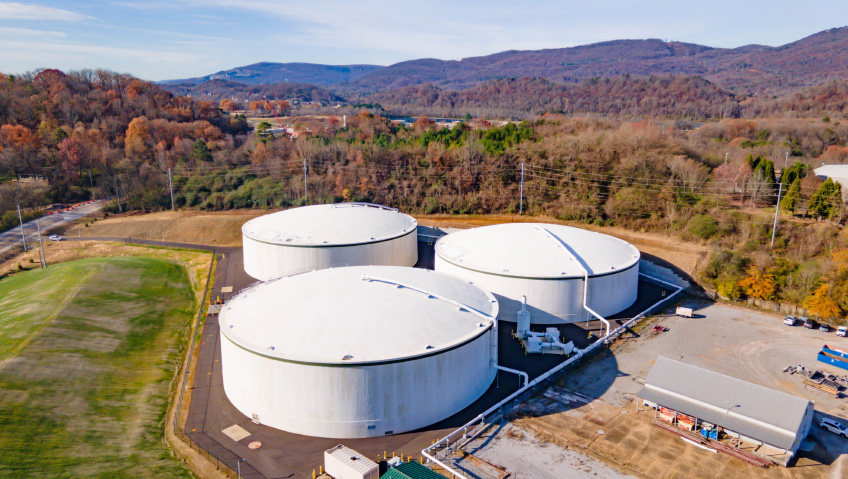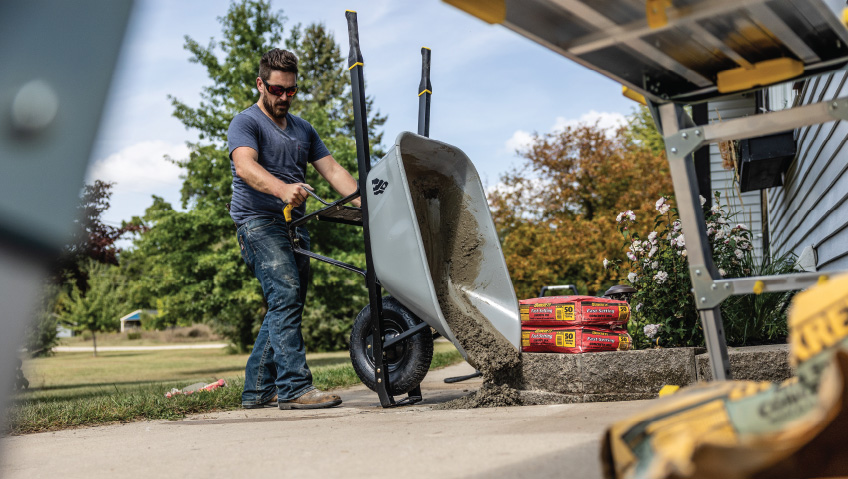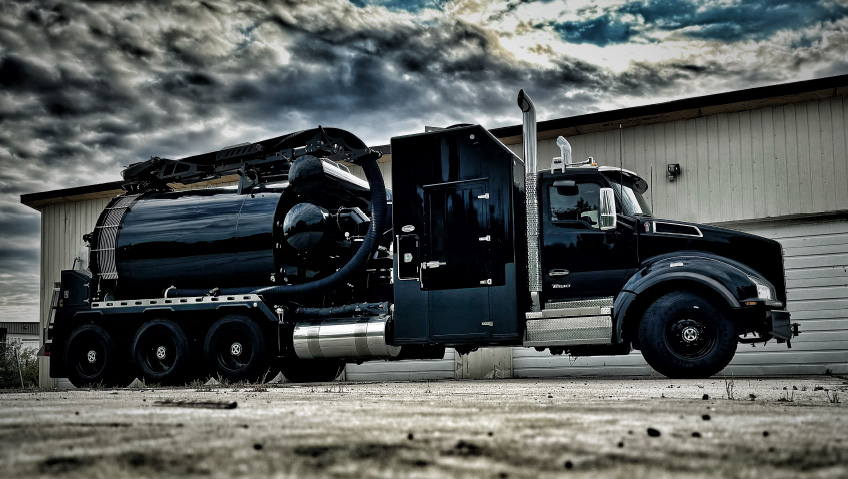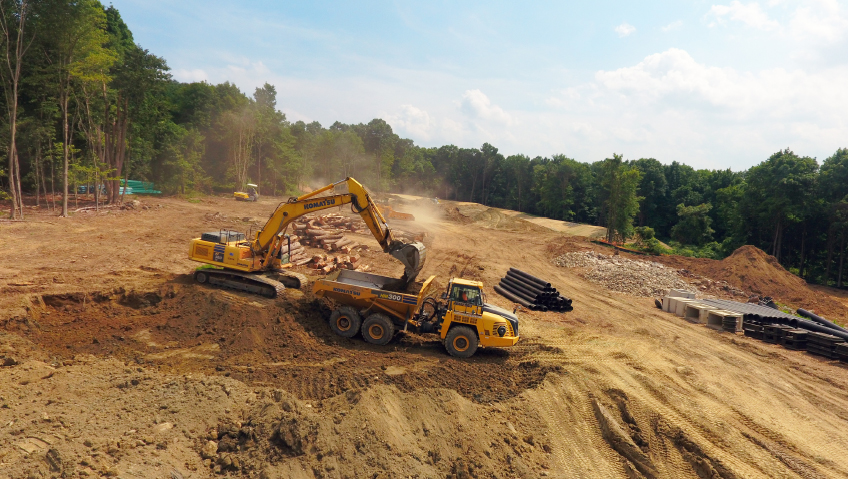For more than seven decades, CROM has been a trusted partner to owners, engineers, and contractors in water and wastewater infrastructure. Known historically for its pioneering work in prestressed concrete tanks, the company has steadily transformed to offer full-spectrum services that extend far beyond tank construction. With nearly 700 employees across eight regional offices, CROM has positioned itself as the national water infrastructure solutions provider, blending engineering, construction, and long-term service in ways that few competitors can match.
The origins of CROM trace back to the 1930s, when J.M. Crom was in Texas, applying gunite to canal banks where he finalized his idea to improve traditional cast-in-place and metal storage tanks with his new invention, the prestressed concrete tank.
In the early 1950s, J.M. Crom and his sons Ted and Jack relocated to Gainesville, Florida where they established a company that controlled both the design and construction of prestressed concrete water storage tanks. This approach was a departure from earlier practices, where design and construction were handled separately, and it laid the foundation for what would become CROM’s signature design-build methodology.
Since that time, the company has operated continuously, building a legacy of innovation and expertise in prestressed concrete tank construction. This dual focus on engineering and construction not only set CROM apart early on but also established the framework for the company’s ongoing expansion into comprehensive infrastructure solutions.
Today, while prestressed tanks remain central to the business, they represent only part of the story; over half of CROM’s work today comes from its Restoration Services division, which delivers comprehensive solutions for the nation’s aging infrastructure. This includes everything from inspections and demolition to repairs, high-performance coatings, safety upgrades, and ongoing asset protection programs designed to extend system lifespans. The company has transformed well beyond its reputation as a tank builder to a full-service infrastructure solutions provider.
“Over the last 70-plus years, CROM has embraced a client-first mentality,” says Bobby Oyenarte, PE, CROM Chief Executive Officer. “We call it the CROM Way, prioritizing client needs in everything we say and do. With this approach, combined with the delivery of safe, high-quality, and comprehensive solutions designed to stand the test of time, we develop clients for life.”
Despite employing nearly 700 people, CROM maintains a close-knit family-like culture with strong organizational health, focusing almost as much energy on its team members as it does clients.
“At CROM, we believe in service-based leadership,” says Alexander Ciasca, PE, Senior Vice President of Development. “That means asking, ‘What can I do to help my fellow team member? Can I show up willing to lend a hand?’ If nearly 700 people are pulling in the same direction with that attitude, it’s amazing what we can accomplish for our clients and our team members.”
Roughly a quarter of CROM’s employees are “support” team members, while the remaining serve in the field directly executing client projects. This balance keeps the company grounded in practical, real-world delivery while facilitating a continued investment in engineering and development capabilities. “It also enables CROM to quickly adapt to varying client needs by deploying the right resources, to the right place, at the right time,” says Oyenarte.
One striking example of CROM’s ability to adapt quickly came with an emergency repair on a 1.8-MG clearwell tank in Florence, Alabama. “The client noticed a significant amount of water loss beyond what you’d expect from evaporation,” recalls Project Manager Joseph Leahy. “We sent a diver to locate the source of the leak, but the diver couldn’t make a successful repair. So, the client had to drain the tank completely for further investigation by one of our restoration crews.”
Once inside, the team discovered a serious issue: the tank foundation, buried 30 feet underground, had separated from the rest of the structure due to geological processes. With season demand peaking, the municipality couldn’t afford to keep the tank offline. CROM developed a repair solution that allowed the facility to quickly return to service and continue operating through a critical flow period. The solution has proven effective, with no signs of water loss or chlorine traces in the surrounding groundwater, clear evidence that the solution is performing as intended.
This innovative repair solution had been under discussion among CROM’s subject matter experts for years—Florence provided the opportunity to put it into practice. “It was a great chance to fine-tune and prove its effectiveness in the field,” says Leahy.
Oyenarte adds, “As engineers first, we lead with integrity. It is always our goal to deliver trustworthy, innovative, and long-lasting solutions under the highest ethical standards for all of our clients.”
Ciasca emphasizes the importance of CROM’s integrated structure: “Having design capabilities paired with construction capabilities allows us to move with unmatched speed. We can develop a repair procedure and then execute it in real time, instead of waiting for separate firms. That’s a huge benefit for our clients.”
Beyond emergency projects, CROM has strategically expanded its role in design-build delivery, a model increasingly adopted across the water industry. “We believe in the design-build methodology,” says Ciasca, who, along with Oyenarte, holds the full DBIA certification. The certification process serves as an ongoing form of education, ensuring the team stays current with industry best practices, procurement strategies, and regulatory standards.
“We’re advocating for more of our employees to pursue [DBIA] certification as well,” says Blake Roberts, Vice President and Region Lead.
In 2024, CROM also achieved QP 8 certification from AMPP, joining a select group of about 25 contractors nationwide. This designation recognizes contractors with the highest standards in concrete protective coatings.
Through these efforts, CROM continues to position itself as a long-term partner, guiding clients through every stage of a project starting with initial assessments and design options, through value engineering, construction, and even ongoing long-term asset protection. Rather than focusing solely on securing a contract and a single new project, the team’s goal is to build lifelong relationships as a trusted resource to serve all of the client’s needs.
Roberts frames it simply: “Our goal is to be a solutions provider, listening and responding to our clients’ needs, and creating, not just a product or repair, but a true partnership.”
As such, CROM’s trade show presence is about more than brochures and booths; it’s about relationships. “It’s really an opportunity for the whole industry to come together,” says Roberts. “We use trade shows to showcase our advanced technologies, like our CROM2 ™ tank, and to remind clients of the breadth of services we provide.”
CROM2, a rectangular prestressed concrete tank unveiled in late 2023, was a highlight at recent conferences. After nearly seven decades of specializing in circular and elongated tanks, the company responded to growing client demand for rectangular tanks that deliver the same level of performance. The introduction of this new design was unveiled at AWWA’s Florida Section tradeshow, marking a significant milestone in innovation.
For Roberts, the face-to-face nature of trade shows is invaluable: “Digital communication is great, but what you lose is the intimacy of listening directly to a client’s challenges. In person, over dinners, presentations, or technical sessions, you get those insights you can’t get from an email.”
At trade shows, CROM is often recognized for the strength of its industry relationships—a reflection of the effort the team invests in fostering connections with clients, partners, and suppliers. Conferences frequently feel like reunions, providing opportunities to reconnect with clients, reflect on past collaborations, and celebrate shared successes.
These days, CROM is also investing heavily in technology.
“In hydrodemolition, one of CROM’s unique demolition services, we’re upgrading ultra-high-pressure equipment with robotics to make processes safer and more efficient,” Ciasca explains. CROM is also collaborating with companies to integrate AI into inspections, enabling faster and more accurate reporting.
Sustainability has become an increasing focus for the company as well. On recent data center projects, CROM has employed detailed carbon footprinting and natural material use to meet stringent carbon standards. Of course, durability remains central to CROM’s sustainability approach, with all designs aimed at extending the service life of structures for decades. Rather than temporary fixes, the company emphasizes robust, permanent solutions that address issues correctly the first time.
As the industry shifts toward collaborative delivery and long-term resilience, CROM sees its future role clearly. “If you’re not constantly improving, you’re falling behind,” says Ciasca. “For us, that means continuing to answer our clients’ calls, whether for new services, new geographies, or new structures like CROM2. We’re not going to rest on our laurels.”
CROM’s history is defined by steady evolution and a consistent focus on partnership. From its beginnings as a pioneer in prestressed concrete water storage tanks, the company has grown into a comprehensive provider of water and wastewater infrastructure solutions. Over the past seven decades, this evolution has been guided by innovation, quality, and long-standing client relationships.
Today, CROM’s work extends well beyond tank construction. The company emphasizes listening and responding to client needs, positioning itself as a trusted partner rather than a traditional contractor. Its services now include design-build capabilities, the integration of advanced technologies such as 3D high-definition digital renderings and robotics, and the application of sustainable practices aimed at delivering durable, long-term solutions. With this approach, CROM continues to play a leading role in building and restoring the nation’s water infrastructure.
By combining technical expertise, industry certifications, and a collaborative approach, the company ensures that every project, from new construction to maintenance and repair, delivers maximum value and reliability for all its clients.






